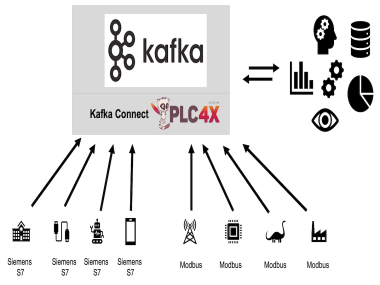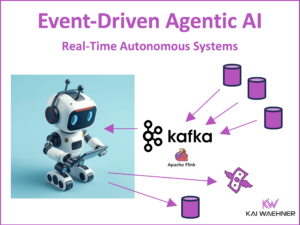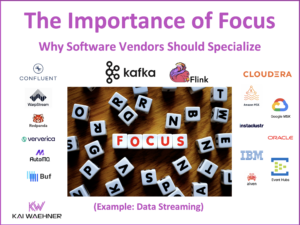These days, we are starting a new project for realizing a Rich Internet Application (RIA). One of the first questions is: Which technologies and frameworks shall we use? The backend will be Java or another modern JVM language, as we are mainly experienced Java developer. In most use cases, we also prefer web frameworks, which allow to code mostly in Java, as many of us just have basic knowledge regarding HTML and JavaScript.
A decision has to be made for the upcoming project: Shall we use HTML5 or JavaFX 2 for realizing the web client? If you ask Google for “javafx or html5”, you do not find much information. In the majority of cases, you end up with a presentation hold at several IT conferences in 2011: “Moving to the Client: JavaFX and HTML5 Presentation”. Here is the Slideshare link (from JavaOne 2011): http://www.slideshare.net/steveonjava/moving-to-the-client-javafx-and-html5. Because this presentation does not help much, we took a look at pros and cons, which are listed below in this blog post.
But let’s start from the beginning…
What is a Rich Internet Application (RIA)?
There is no real definition for RIA. Therefore, here is my definition for this blog post:
“A Rich Internet Application provides a modern looking web application with animations, effects and multimedia features. The web application is hardly recognizable as web application. There is no classic HTML user interface with forms, drop down boxes or tables. Typical features of web browsers such as bookmarking or forwards / backwards navigation are usually missing / not required. It is client-centric, i.e. most of the user interface is loaded at the beginning to offer very good responsiveness. Sometimes (i.e. if you use a web framework instead of just HTML5), a plugin must be installed (e.g. Java Runtime Environment or Adobe Flash Player). Pokerstars (www.pokerstars.com) is a very good example for a RIA.”
Alternatives
Several alternatives are available in the JVM environment for realizing a RIA:
- Plain HTML5: Good solution, but you do not code in Java or another JVM language.
- Adobe Flash / Flex: Dead! Even Adobe moves to HTML5.
- Microsoft Silverlight: Dead! Even Microsoft Windows 8 moves to HTML5. (Of course, Silverlight is no real JVM solution, but you can make it work together with JVM backend. For the sake of completeness, I added it to this list.)
- JavaFX: Java-based solution (replacement for Swing in the future).
- Other JVM web frameworks besides JavaFX (JSF, GWT*, Wicket, Tapestry, Grails, Lift, “You-Name-It”): Not built for realizing RIAs. Yes, you can realize a RIA with these frameworks. Though, development is ugly, and the RIA will be ugly, too. So why would you do this? (Please remember my above definition of a RIA before you begin complaining in the comments!)
* GWT also has nice (experimental) HTML5 support for some features already: http://www.google.com/events/io/2011/sessions/gwt-html5-a-web-developers-dream.html => If Google continues adding support for HTML5 to GWT, this may be a good alternative in the next years, too – you develop only in Java, and you do NOT need a browser plugin because GWT generates plain HTML and JavaScript. However, there are also rumors that GWT is dying due to Google’s new language Dart. Google did not comment this yet, or release a roadmap for GWT.
So, the question is when to use JavaFX 2 instead of HTML5 for realizing a RIA (from the view of a Java developer)? If you do not know much about HTML5 or JavaFX, you should look at Wikipedia or google for other articles.
What is HTML5?
=> http://en.wikipedia.org/wiki/Html5
Important: HTML5 is HTML + CSS + JavaScript! It offers several next generation features for modern web development, such as Offline Storage or Application Cache.
What is JavaFX?
=> http://en.wikipedia.org/wiki/Javafx
Reminder: We are talking about JavaFX 2.0. The main difference to earlier versions is that JavaFX now offers a Java API instead of a new programming language (JavaFX Script). Thus, it is easy to learn for a Java developer.
Why HTML 5 / JavaScript?
Pros
- W3C standard
- It’s the future – no question!
- No plugin is required, can be used in every (supported) web browser
- Already many widgets and features available
Cons
- Development with HTML / JavaScript instead of Java => Main disadvantage for a Java developer!
- Spec not final yet (according to the roadmap not before 2014!)
- Not supported by all browsers (yet)
- Cross-browser development is necessary (JavaScript frameworks such as jQuery or Dojo solve this problem, but increase efforts nevertheless)
Probably, there are many other pros and cons for HTML5. Though, the named ones should be sufficient for deciding when to use HTML5 or JavaFX.
Why JavaFX 2?
Pros
- Offers a Java API => Leverage your Java skills and use existing JVM features and libraries
- Offers DSLs for further JVM languages, e.g. Groovy (GroovyFX) and Scala (ScalaFX). Read this article to learn how to benefit by using modern JVM languages instead of Java: “JavaFX 2.0 and Scala, Like Milk and Cookies” => http://www.javacodegeeks.com/2012/02/javafx-20-and-scala-like-milk-and.html
- optional: “layouting” language FXML to split UI definition from behaviour => choose your favorite between programming (with Java) and layouting (with FXML)
- Same development environment for backend and web client (including debugging, refactoring, etc.)
- No cross-browser problems
- CSS support (as in HTML)
- HTML and / or JavaScript can be integrated in a JavaFX application
- Swing and JavaFX can be used in same application, so existing Swing applications can be extended
- JavaFX 2 provides a unified architecture for writing an application once and then deploying it to various contexts (standalone application, embedded in a web browser or run via Java Web Start). Additional contexts will be added in the future (e.g. running the same application on a mobile device).
Cons
- Java Runtime Environment is required on client
- Only parts of JavaFX are open source. The Oracle JavaFX runtime and SDK will continue to be released under the Java Binary Code License
- JavaFX for Mac only available as Developer Preview (GA planned for the mid of 2012) => see JavaFX roadmap
- JavaFX for Linux not available yet (Developer Preview planned for Q3 of 2012)
- No information about future of JavaFX Mobile yet (at least I did not find anything, if someone has a link, please add a comment!)
- Offers less widgets and other features than HTML5
- Though JavaFX is the (future) replacement for Swing, development is different due to several new concepts. Of course, this is the consequence of adding RIA features such as animations => Thus, this is no real disadvantage, and its still easier for a Java developer to learn some new concepts than learning HTML and JavaScript
Conclusion
HTML5 and JavaFX 2 are both awesome for realizing RIAs including media, charts, animation, etc. In the end, both have a different target audience:
- Public web applications should be realized with HTML5, because requiring a browser plugin is a no-go in most use cases. Therefore, even for Java developer there is no alternative to HTML5.
- Within an enterprise, it may be acceptable to require a plugin. Probably, Java is already installed on most machines anyway. If all needed widgets and other features are available, JavaFX is the better choice for enterprise applications because a Java developer can realize RIAs much easier by developing in its well-known JVM environment.
Have fun realizing your RIA with HTML5 or JavaFX 2. By the way: We will probably choose JavaFX for our internal project because the required Java plugin is no show-stopper and most colleagues are Java developer.
If I missed any important pros or cons, or if you have any other feedback, please feel free to leave a comment…
Best regards,
Kai Wähner (Twitter: @KaiWaehner)





